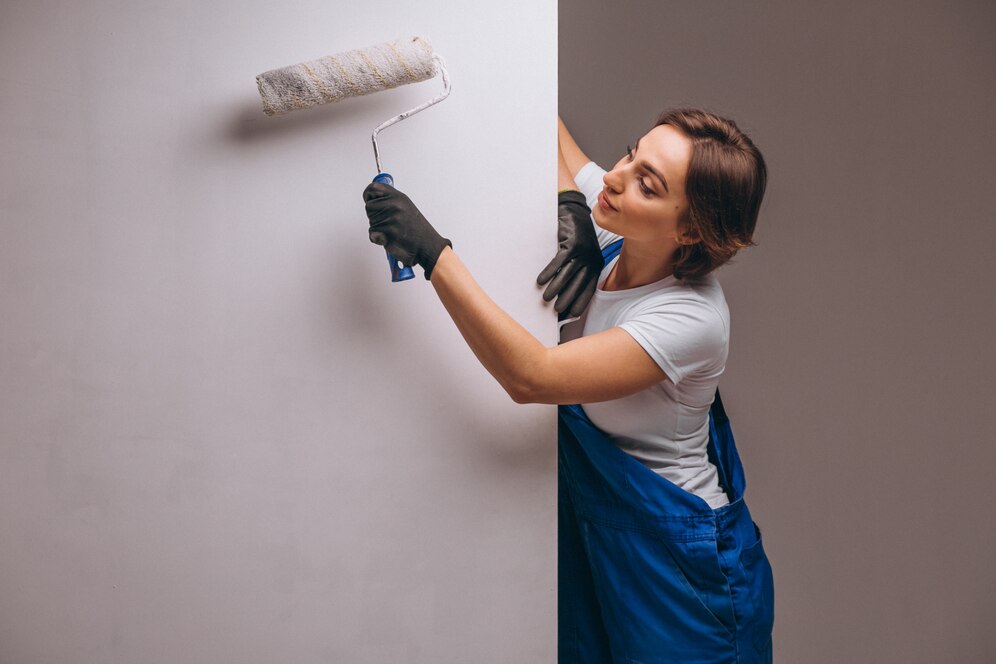Choosing the perfect paint colors for your home can be exciting, but ensuring a smooth transition between different shades is just as important. Whether you’re creating a bold accent wall or moving from one room to another with varying tones, the way colors interact impacts the entire aesthetic. If not planned properly, color shifts can feel abrupt or out of place. Proper techniques help maintain flow, making your space feel harmonious rather than disjointed.
As professionals in house painting services, Precision Painting knows how crucial these transitions are. From blending complementary shades to using architectural elements effectively, various methods ensure a seamless flow between colors. Below are the best approaches to achieve smooth and visually appealing paint transitions in your home.

Plan Your Color Scheme Thoughtfully
Before starting any painting project, take the time to map out your color scheme. Consider how different shades will interact and how they will contribute to the mood of each space.
- Stick to a Cohesive Palette: Even if you love bold colors, they should still complement each other. Choosing hues from the same family or with similar undertones helps create a natural transition.
- Use the 60-30-10 Rule: A primary color (60%) should dominate, a secondary color (30%) should support, and an accent color (10%) should add contrast without overwhelming.
- Consider Natural Light: Light changes the way colors appear throughout the day. Test swatches in different lighting to ensure a smooth transition between spaces.
Use Open Doorways and Archways for Natural Transitions
Architectural features such as doorways, archways, and molding act as built-in transition points. These areas provide a clear stopping and starting point between colors, making the transition feel intentional.
- Doorways as Dividers: When transitioning from a deep shade in one room to a softer color in another, doorways create a natural boundary.
- Archways as Gradient Spaces: If an archway connects two rooms with different hues, consider using a bridging color on the arch itself to unify the spaces.
- Trim and Molding as Separators: Keeping trim and molding a consistent color throughout the house can provide continuity even when wall colors change.
Blend Colors with a Transitional Wall
A transitional wall acts as a buffer between two contrasting colors, making the shift more gradual. This technique is particularly useful in open floor plans where walls flow into each other without clear separation.
- Use a Neutral Bridge Color: If two rooms have strong colors, applying a neutral shade on the transition wall softens the contrast.
- Experiment with Ombre Effects: A subtle ombre effect, where one color gradually fades into another, can create a unique and artistic transition.
- Consider Wallpaper or Textured Finishes: A transitional wall with a patterned wallpaper or texture can tie together different colors while adding depth to the space.
Utilize Furniture and Décor to Ease the Transition
Furniture, rugs, and décor pieces can help bridge the gap between different colors without requiring a middle transition wall.
- Incorporate Shared Accent Colors: If one room is painted deep blue and the next is a soft gray, adding blue décor elements in the gray room ties the two spaces together.
- Choose Multi-Toned Furniture: Sofas, artwork, and rugs with colors that appear in both spaces help blend distinct shades naturally.
- Use Gradual Color Flow: If moving from a warm-toned room to a cooler one, placing transitional furniture pieces in neutral shades like beige or taupe makes the shift feel smoother.
Leverage Hallways for a Subtle Transition
Hallways play an essential role in connecting different rooms, and their color can influence how smoothly spaces flow together.
- Opt for a Neutral Hallway Shade: A neutral hallway creates a balanced middle ground between varying room colors.
- Match Trim and Doors Across Spaces: Keeping doors and trim consistent throughout the home establishes continuity, even when wall colors differ.
- Use Gradual Light-to-Dark Transitions: If one room features a bold color and another is light, selecting a mid-tone hallway color helps soften the contrast.
Experiment with Color Blocking and Stripes
For those who enjoy creativity, color blocking and stripes offer an artistic way to transition between colors. These techniques introduce gradual blending or bold separation without looking abrupt.
- Color blocking with Complementary Shades: Choose two complementary hues and create a geometric block where they meet. This approach works well in modern and eclectic spaces.
- Striped Transitions: Vertical or horizontal stripes using both room colors create a dynamic, visually interesting shift.
- Blended Borders: Softly feathering one color into another with a sponge or brush technique provides a subtle transition effect.
Use a Unifying Ceiling or Floor Color
A consistent ceiling or flooring color brings unity to different spaces, even when wall shades vary.
- Keep Ceilings a Uniform Color: A single ceiling color throughout the home prevents abrupt changes between rooms.
- Unify Spaces with Flooring: Hardwood, tile, or consistent carpeting creates a seamless connection between differently colored rooms.
- Play with Area Rugs: In open spaces, strategically placed rugs featuring elements from both colors help blend the transition.
Test Before Committing to a Full Paint Job
Testing colors in real conditions before painting an entire room is crucial. Even colors that look great separately may clash when viewed together.
- Use Large Swatches: Paint large test patches where rooms meet to see how they interact in different lighting.
- Observe throughout the Day: Colors shift depending on natural and artificial lighting, so view them at various times.
- Compare with Décor Elements: Consider furniture, flooring, and existing design elements before finalizing color choices.
Maintain a Balanced Color Flow Throughout Your Home
When multiple rooms are painted differently, ensuring a logical flow prevents the space from feeling chaotic.
- Avoid Abrupt Contrasts: While variety is good, extreme changes from one room to the next can feel disjointed.
- Repeat Accent Colors Across Rooms: Even if the main colors differ, repeating accent hues helps maintain consistency.
- Consider the View from One Room to another: Stand in doorways and assess how colors appear together to ensure they complement each other.
Why Choose Precision Painting?
At Precision Painting, we specialize in creating smooth, professional color transitions that enhance the beauty of every home. With years of experience in house painting services, our team understands how to blend shades seamlessly, ensuring a cohesive and polished look throughout your space.
Our expertise includes:
- Customized color planning tailored to your home’s aesthetic
- High-quality paint application for flawless transitions
- Attention to architectural details for natural separation points
- Professional advice on selecting the best shades for continuity
Whether you want subtle shifts or bold contrasts, our team delivers expert craftsmanship and precision. Let us help transform your home with perfectly balanced colors that flow effortlessly from room to room.

